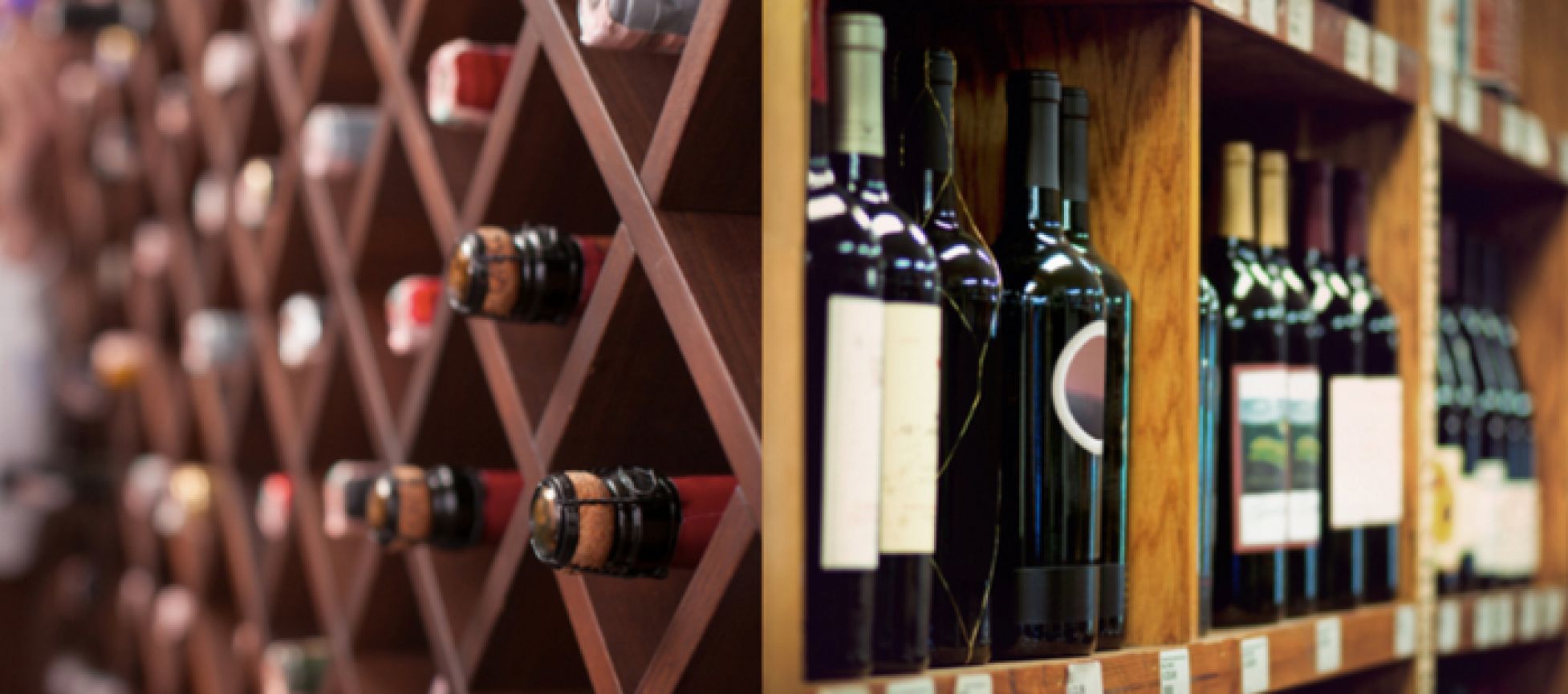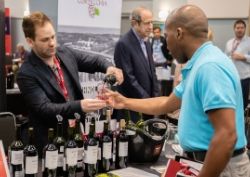Blog
Insights
Private Label Wine Business in USA

As the US market becomes more competitive, big retailers and restaurant chains are turning to private label. Jeff Siegel maps out the process of creating private label wines.
The growing US private label market offers European producers a chance to sell wine in the biggest wine-consuming country in the world, not only reaching a new market but also possibly getting better margins. But, as with all things US wine-related, creating private labels means negotiating the three-tier system that regulates US wine distribution – each of the 50 states has its own laws, and there are sometimes even different laws within a state.
In addition, the private label system – that is, the creation of wines that are exclusive to one retailer or restaurant – can be almost as complicated as the three-tier system. Not only are there two major kinds of private label, there are also several legal and supply chain hurdles to overcome to do it successfully. Still, say those who do private label, it can work and benefit producers. “You have to be willing to be flexible,” says Jean Hoefliger, a Swiss native who is the winemaker at California’s Alpha Omega, as well as a consultant who has worked with private label on both sides. “You have to be willing to understand how the US market is different, on how the system works, and what retailers are looking for.”
What is private label?
Private label wine, also called ‘store label’, is a brand that is created for, and sold exclusively by, one retailer and can’t be found anywhere else. It may carry the name of the retailer – which is common in Britain, but less so in the US – or a name devised for that retailer. The two best-known private labels in the US are Kirkland, which is sold only at the Costco warehouse chain, and Charles Shaw, the legendary ‘Two Buck Chuck’, available only at the Trader Joe’s specialty grocery chain.
Traditionally, private label was only for retailers, but the growth of large regional and national restaurant chains in the US has created a demand for private label on-premise as well. The other thing to know? There are two kinds of private labels – control, or exclusive brands, and traditional private label brands. In the former, the producer owns the label, and can sell it to any retailer it wants. The Charles Shaw wines are control brands, since its producer, Bronco Wine Company, owns the label. Costco’s Kirkland is a traditional private label, where the retailer buys wine from a variety of producers and sells it under a name that it owns. Each approach has its advantages. Owning the brand allows the producer to make the best deal it can, and to shop the label if it doesn’t like the current deal. But working on a private label with a big retailer offers stability and predictable sales. In this, says Gary Glass, president of the Parducci-owned Mendocino Wine Co in Ukiah, California, it’s not one size fits all. Each producer has to decide what works best for it; if it doesn’t want to worry about marketing, then traditional private label works better, for instance.
For some producers, it’s so worthwhile that they specialise exclusively in private label; they buy bulk wine or juice and then package it for the retailer, based on the retailer’s requirements. Or they put together a private label program and pitch it to a retailer or restaurant chain. The system also works the other way. Costco, for instance, contracts with producers to make wine for its Kirkland brand and looks for specific varietals and regions of the world. Even small wineries make a private label. About 15% of the 5,000-case Brooklyn Oenology, a small New York City producer, goes to private label. Owner Alie Shaper says she works with local retailers and restaurants, who don’t need to buy enough wine to interest a bigger producer but do want to do private label.
The growth of the market
The private label market is growing quickly, though it still isn’t as established as it is in Britain or used as often as it is in other US consumer categories. John Bratcher, a long-time retailer, wine broker, and winery sales executive in Austin, Texas, says: “It has picked up over the last 15 years, and really accelerated over the past five years. The idea is that, with the expanding wine market in the US and more retailers, more retailers want to sell something that consumers can’t buy anywhere else.” One difficulty with tracking private label in the US is that many retailers are reluctant to identify their wines as private label. Kroger, the $110bn grocery store chain, sells several private label wines under names such as Parkers Estate. This is such a common practice that Nielsen, which tracks grocery store wine sales, has a difficult time estimating the extent of private label sales in the US.
 The Total Wine & More chain, with 135 stores in 18 states, and BevMo!, with 158 stores on the west coast, have a heavy focus on private label. After speaking with a number of private label producers, it appears that as much as 20% of the wine sold at the largest national supermarkets could be store brands; at some retailers, it may be as high as 40%. The reason is not hard to find. The margins on private label wines are simply better – often double that of branded wines – and they also offer the retailer exclusive products. As important as margins are, that exclusivity matters, too. Retail competition in the US is more intense that it has ever been, as chains like Total Wine & More expand and supermarkets like Kroger boost their wine sections. This means that smaller retailers, in particular, are looking for something to sell that the bigger retailers don’t carry.
The Total Wine & More chain, with 135 stores in 18 states, and BevMo!, with 158 stores on the west coast, have a heavy focus on private label. After speaking with a number of private label producers, it appears that as much as 20% of the wine sold at the largest national supermarkets could be store brands; at some retailers, it may be as high as 40%. The reason is not hard to find. The margins on private label wines are simply better – often double that of branded wines – and they also offer the retailer exclusive products. As important as margins are, that exclusivity matters, too. Retail competition in the US is more intense that it has ever been, as chains like Total Wine & More expand and supermarkets like Kroger boost their wine sections. This means that smaller retailers, in particular, are looking for something to sell that the bigger retailers don’t carry.
So what works in private label?
“Retailers always tell you that they want the best quality private label, but so many other things go into it,” says James Gunter, who owns Wines With Conviction, a wholesaler and distributor in Dallas who has worked with a private label for years. “Where are they trying to slot the private label? What pricing do they want?” Does the retailer want to control or traditional private label? What grapes? Does it need a private label to compete with a national brand? To fill a certain space on the shelf, be it a category like red blends or a specific region? Does the retailer have a particular demographic in mind? Retailers are more likely to use well-known international grapes for private label, rather than regions or more unusual grapes.
This doesn’t mean there isn’t a market for Rhone wines, or for French, Italian, and Spanish varietals, but that it’s often an uphill battle trying to make private label wines from them. Retailers are a little more open than used to be, says Gunter, but it still isn’t easy.
As to how to get into the market, while referrals happen, Glass of Mendocino Wine says cold-calling is vital. His company uses a pitch book with sample labels that include the name of the wine, the price point, and the wine blend. This gives retailers “the look and feels” of what they might finally see on their shelf; a retailer who wants a $20.00 red blend or an $18.00 Chardonnay will be able to see a product mockup. What the label looks like is crucial, says winemaker Hoefliger: “This is something that is difficult for Europeans to understand,” he says, adding that the wine is sometimes less important than the name and the label. “Don’t be surprised if you spend 70% of the cost of developing the private label on that part of it.” That’s why Gunter says it’s important to find an importer with private label experience.
The importer will better know which retailers are looking for a private label, what wine they’re looking for, and who makes the decisions. “I’ve wasted a lot of time with teams of salesmen over the years,” says Gunter, “but they weren’t anyone who could make a decision. Find the decision maker, and have a clean conversation.” In three-tier, every wine sold to a retailer or restaurant must go through a distributor. This means that almost every private label wine, even if it’s 100% exclusive, still has to be distributed through a wholesaler to the retailer or restaurant.
This isn’t as much of a problem when dealing with a big retailer since the retailer’s wholesaler will probably be happy to take the wine to keep the retailer happy. But it can be problematic when selling to a smaller retailer and there isn’t enough volume to interest larger wholesalers. Labels must also be approved by the US government, and some states require that wine goes through their own label approval process. In both cases, an experienced importer can help navigate the legal challenges.
Is it worth it?
Producer margins on private label wines can be much better than on branded wines – 50% to 55% compared to the more usual 30% to 35%, says Texas retailer Bratcher. Here, as in so many other areas, says Glass, one size does not fit all. Producers may have to sacrifice margin to get a retailer’s business, and larger retailers may offer lower margins in any case because they do more volume or are using the private label to undercut a rival’s brand. Hence, producers need to be flexible and willing to work with the retailer on price and margin, particularly when it comes to their first contract. Once the first private label wines are on the shelves and selling, they will hopefully prove themselves and be a key to future business. - Jeff Siegel
If you're a bulk wine or bulk spirits supplier, contract bottler, or private label producer aiming to connect with serious trade buyers, IBWSS San Francisco is the event you can't afford to miss. Get a quotation or Book a exhibitor table.

